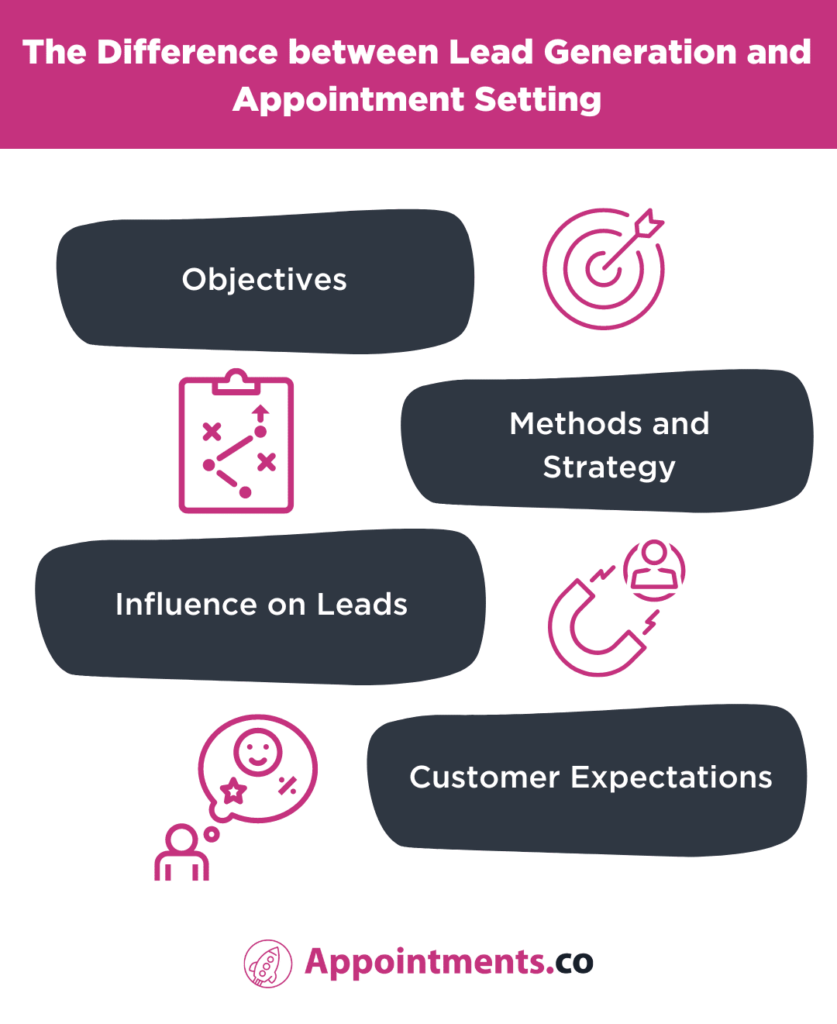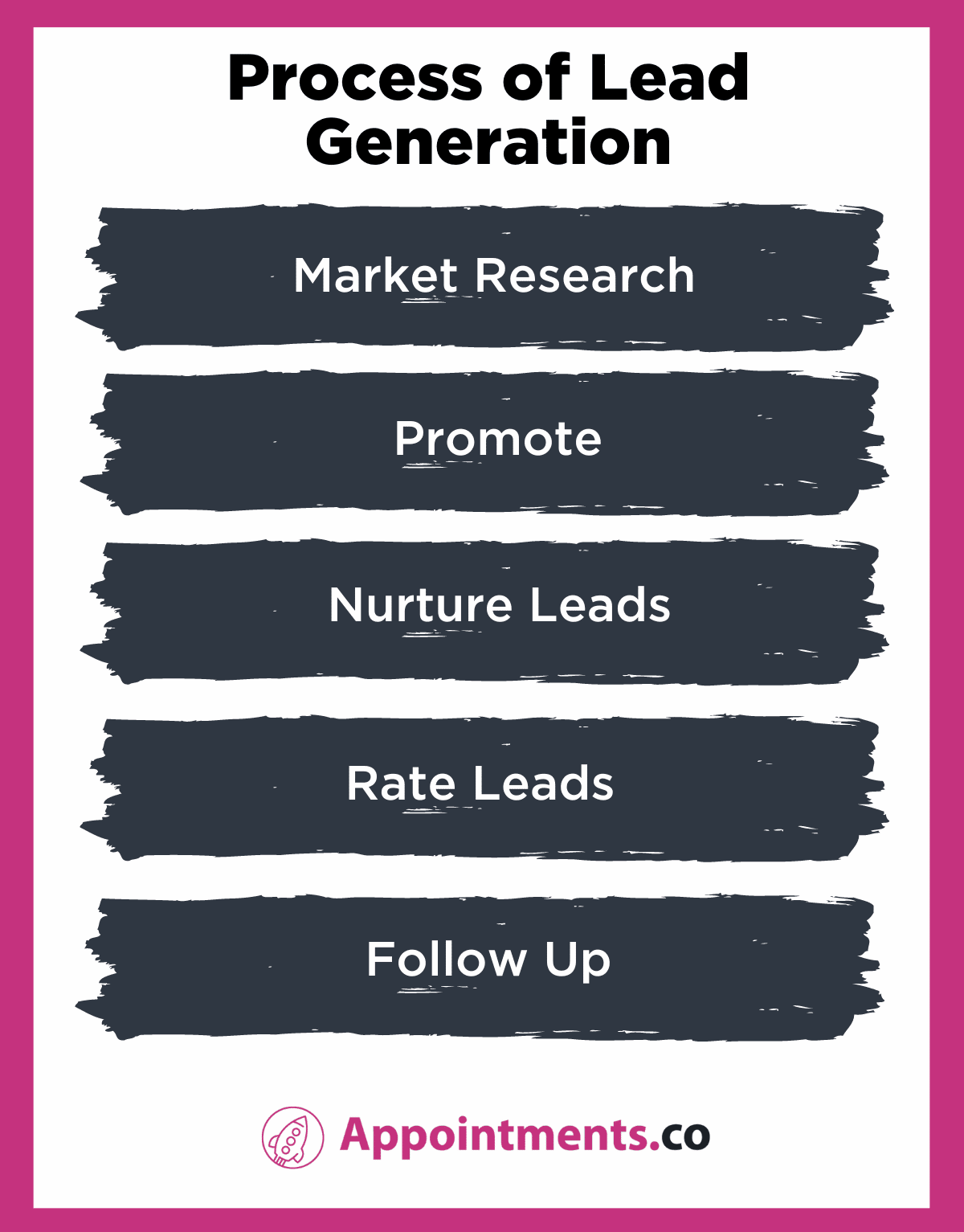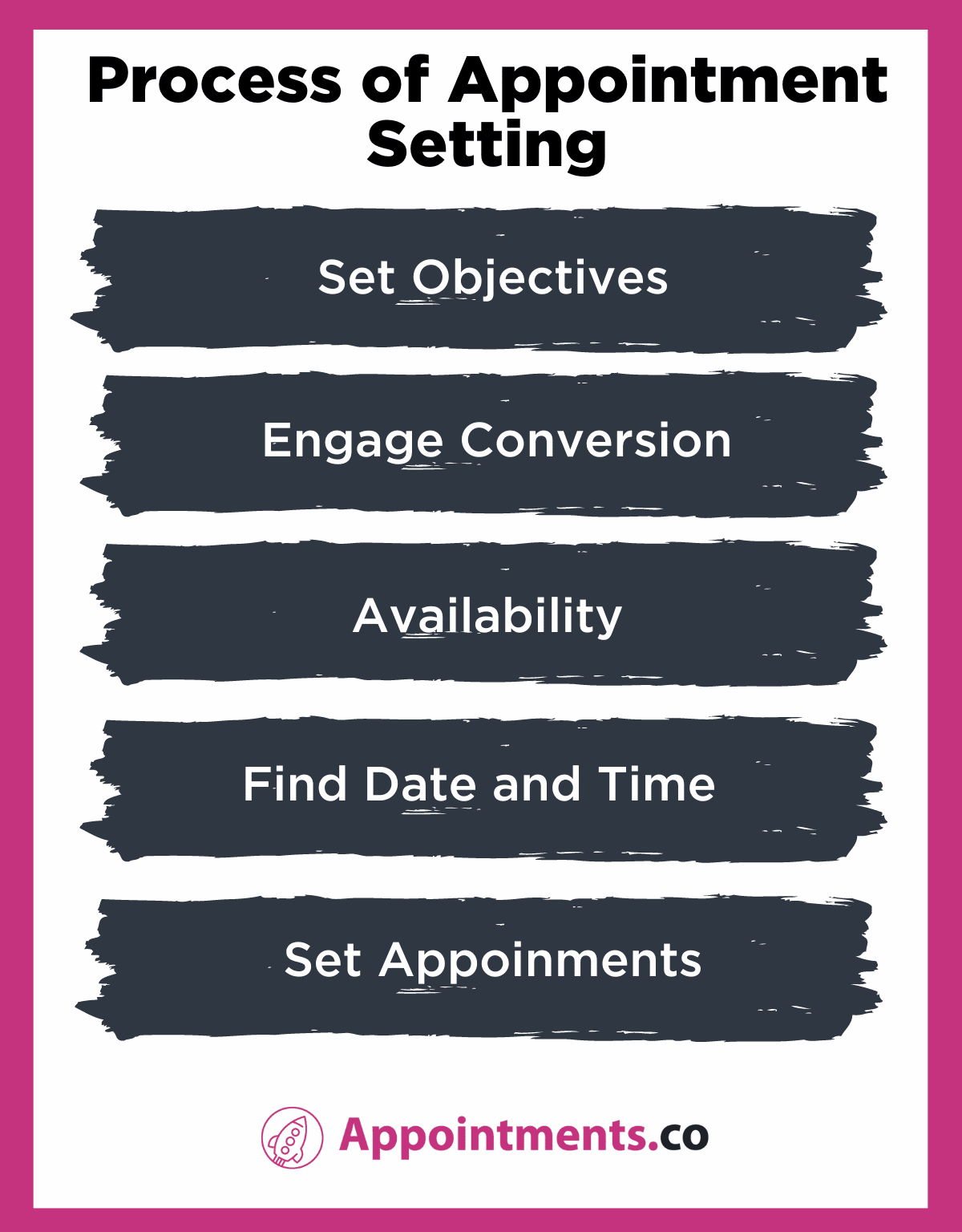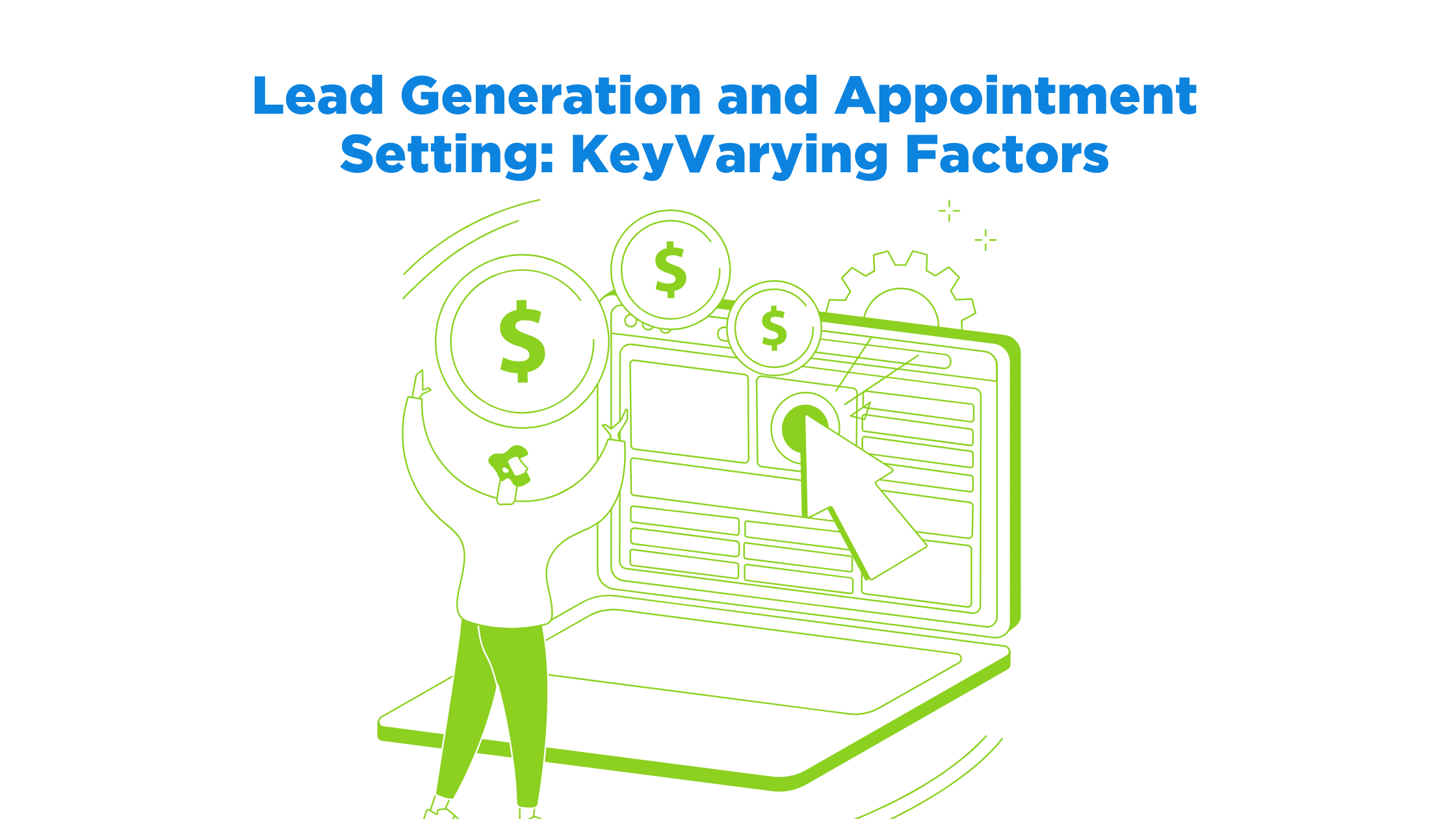Lead generation and appointment setting are two different processes that represent two different stages of building your business. When your ultimate goal is to schedule appointments with valuable leads, you should start with generating qualified leads. These generated qualified leads are the base of your business from which you can churn out the best suitable highly converting leads as your customers. If you are a business professional and want to excel in these processes, first you must understand the unique differences among these processes and then study each of them in detail.
In this article, let us explore the following topics in detail
- Lead Generation and Appointment Setting – What are They?
- Factors that Differentiate Lead Generation and Appointment Setting
- Lead Generation Process
- Appointment Settings Process
- Frequently Asked Questions
- Closing Thoughts
- Related Reads
Lead Generation and Appointment Setting – What are They?
The appointment setting is usually the last stage in the process of lead generation. The sales rep gives in-depth sales to finalize the deal.
Lead is generally a person who has given his information to the company to contact regarding their interest that is expressed in the company’s product or services. Lead generation is focused on reaching the prospects through the right strategy and gathering their information.
Appointment setting is mainly about calling as many people as possible and converting them into qualified leads by asking them to set an appointment with a sales rep or team.
Factors that Differentiate Lead Generation and Appointment Setting
The list of factors for the difference between lead generation and appointment setting are,
- Objectives
- Methods and Strategy
- Influence on Leads
- Customer Expectations

1. Objectives
The goals and objectives are different for lead generation and appointment-setting services. Sales representatives, or the team, are mainly responsible to set objectives for lead generation and appointment-setting services.
2. Methods and Strategy
The method and strategy followed for each project are different. The procedures used for the lead generation process are all about capturing the lead and pursuing them to buy your product or services. 67% of well-formulated strategies failed due to poor execution. The strategy has to be executed well for appointment-setting services to know the interest of the prospects in your product or services and have the potential to make a deal.
3. Influence on Leads
The lead generation and appointment-setting processes have different influences on leads. The lead generation service is to spread awareness of the product or service that has been offered. Appointment setters schedule appointments for the prospects, thereby influencing the business and the customers.
4. Customer Expectations
Customer expectation is different from each process. 66% of customers expect companies to understand their needs. During the lead generation stage, customer expectations for your product or services might be there or not. Because of the appointment setting, potential customers have an interest in your product and services and the duty of the sales rep is to close a deal.
Lead Generation Process
In the discussion on the factors that differentiate lead generation and appointment setting, generating leads is the beginning step of the sales funnel. So it is crucial for any business professional to learn the step-by-step process of lead generation in detail.

1. Market Research
The first step of the lead generation process is gathering information and understanding the company’s target market. An example of market research is conducting a search digitally on a particular topic and making note of the data published from that topic.
2. Promote
Promote your product or services in the market for potential customers to express their interest and take them to the next stage of the lead generation process. The main idea of promotion is to communicate the product, brand, or services to the prospects.
3. Nurture Leads
Nurturing the leads is important for them to know the latest updates about the product or services offered to them. Nurture relationships not only make work easier but also improves productivity. Successful lead nurturing anticipates the needs of the buyer based on who they are and where they are in the sales funnel.
4. Rate Leads
Rate leads on the basis of their interest in your product or services that have been offered. Rating gives an idea for the sales rep or the team to have an idea about the efforts to make the deal happen.
5. Follow Up
The follow-up is an important stage in the sales process because it influences whether the prospects will buy the product or not. 44% of sales representatives give up on their prospects after the initial conversation. Lead generation is the process of getting the people who are interested in the product or services, which your business offers and moving them through a pipeline by becoming paying customers.
Appointment Setting Process
The appointment setting is just a step away from closing deals with your customers. Here is the list of sequential steps based on which an effective appointment setting process is done.

1. Set Objectives
Set objectives that have to be met for effective appointment setting between the parties. Appointment-setting services call as many people as possible to qualify them as prospective customers. Building a strong sales structure is important for a business. The strategy for an appointment-setting campaign and the targeted audiences have to be measured, and the desired criteria have to be set.
2. Engage Conversion
Engage in the conversion with prospects to learn their interest in appointments with the business. Generally, appointment-setting services focus on reaching potential clients, gathering information about them, and knowing their interest in your product or services.
A good appointment setter must have good communication skills as they talk to a wide variety of people to schedule appointments.
3. Availability
Check the availability of the parties, so that the appointment setter can schedule their meeting for a potential deal. Appointment-setting services are possible only when the party’s availability is known for finding the date and time.
4. Find the Date and Time
Find a date and time that is mutually suitable for both parties. The appointment-setting process requires a lot of effort and time when finding a desired schedule for the parties. Mostly, the parties are advised to inform the appointment setters well in advance for a successful appointment.
5. Set Appointments
The final step in the process of appointment setting is to set the appointment for the parties. The duty of the appointment setter is to find out if potential customers are interested in your product or service, then schedule time for the sales representative to meet each prospect.
Frequently Asked Questions
1. How do you do market research for lead generation?
Market research is done on the target audience. Your customers do not represent the attitude of the entire market, they only represent a part of the market. Market research is done based on the information about your prospects, like who they are and what type of business they are dealing with. The sales and marketing team are responsible for this activity in an organization.
2. Why are appointment-setting services necessary for a business?
Generally, appointment-setting services schedule meetings between the sales team and prospective clients to ensure that important meetings are done for the sales team. This process is generally done to improve the interest of the prospects in the product or services while potentially making the deal happen.
3. How does the lead generation process work for a business?
The process of lead generation is different for every company’s products and services, however, there are certain common steps available that is to understand the leads, nurture, and engage the leads, and finally follow up with them.
4. How do you match your resources with customers’ expectations?
Managing the daily schedule can be challenging, as preparing routines, presentations, communicating with attorneys, managers, and staff regarding their inquiries, and assigned tasks. An appointment-setting service can be used to manage all these resources for an effective appointment to make the deal happen.
Closing Thoughts
Businesses must manage the buyer’s journey regardless of lead generation or appointment-setting strategy. The main objective for the business is to close the deal. The marketing or sales teams are responsible for classifying the customers according to their needs.
The factors for the difference between lead generation and appointment are based on their objectives, strategy, influence, and customer expectations. Usually for business, generating leads is the first stage of the sales process and appointment-setting services are the last stage. These processes are important for the sales team to increase their effectiveness.
Lead generation and appointment-setting services are part of the sales strategy. The prospects who might become your customer are part of the lead generation process, and for appointment setting, mostly sales-qualified leads are part of this process.
Appointment setting potentially makes a deal happen, and if you’re looking to schedule a meeting with your prospects, reach out to us!
Related Posts
- Appointment Setting – The Ultimate Guide (Including 6 Tips)
- 8 Best Lead Generation Tips for Effective Conversion
Illustrations by Storyset



